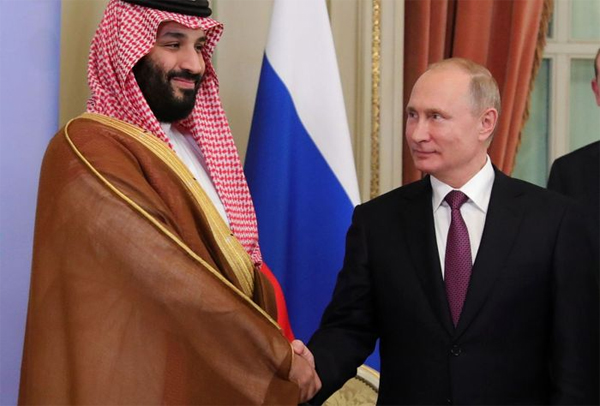
Myra P. Saefong and Williams Watts, MarketWatch
SAN FRANCISCO/NEW YORK
EnergiesNet.com 10 04 2022
Oil prices were sharply higher on Monday, with U.S. benchmark prices settling up more than 5%, following reports that the OPEC+ cartel is considering a production cut of more than 1 million barrels a day.
Price action
- West Texas Intermediate crude CLX22, 0.73% for November delivery rose $4.14, or 5.2%, to settle at $83.63 a barrel on the New York Mercantile Exchange. That was the highest front-month contract finish since Sept. 20, according to Dow Jones Market Data.
- December Brent crude BRNZ22, 0.88%, the global benchmark, jumped $3.72, or 4.4%, at $88.86 a barrel on ICE Futures Europe.
- On Nymex, November gasoline RBX22, 1.82% added 6% to $2.5129 per gallon.
- November heating oil HOX22, 1.93% rose 4.6% to $3.3691 a gallon.
- November natural gas NGX22, 0.56% fell 4.4% to $6.47 per million British thermal units.
Market drivers
“Renewed interest in oil was ignited on press reports over the weekend speculating on the potential for a significant production cut of 1 million barrels a day or more when OPEC+ meets on Wednesday, in order to shore up the market in a time of falling demand due to the sputtering global economy,” said Colin Cieszynski, chief market strategist at SIA Wealth Management, in a daily report.
The price of Brent crude, the global benchmark, hit $130 a barrel in the wake of Russia’s invasion of Ukraine in February, when Western sanctions on Moscow raised fears about supply.
However, prices have steadily declined as those concerns were trumped by the prospect of slowing demand should central bank’s policy of raising interest rates to combat inflation cause a global economic contraction.
This week’s OPEC+ meeting will be the first face-to-face gathering at the group’s Vienna headquarters since the pandemic, adding to expectations that an important policy change is to be debated.
Read: OPEC+ could cut oil production because it’s trying to halt a sharp crude selloff
A production cut would “reinforce a message from Saudi Arabia and other key producers that they are prepared to take action in order to prevent further price declines,” said Robbie Fraser, global research and analytics manager at Schneider Electric, in a daily report.
A cut may also be greeted with dismay among the West’s net energy importers, as it not only may add to inflationary pressures but would be seen increasing prices to help support Russia, which is scrambling for revenue to pay for its invasion of Ukraine.
Also see: Why California is paying nearly 70% more for gasoline at the pump than the rest of the country
Stephen Innes, managing partner at SPI Asset Management, noted that worries about reduced demand in coming months was evident in markets, where the cost of oil futures were lower in contracts for next year.
“The strong dollar and weak demand in China and Europe pose significant headwinds resulting in increased backwardation in term spreads since mid-August and still signaling pessimism around the global economic outlook. A tepid response in futures to a production cut would chime with the negative message that lower U.S. inflation breakevens and industrial metal prices are sending,” said Innes.
Also read: Europe faces ‘unprecedented risk’ of gas shortage, warns IEA
marketwatch.com 10 03 2022







